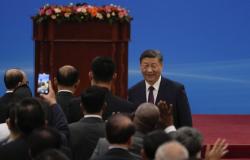After WindTre which offered unlimited 5G, but limited to 10 Mbps, here comes TIM which, starting last week, has seen fit to rename the real 5G to 5G Ultra and to propose, instead of what until a few weeks ago was called 4G+ , the classic 5G.
The question is simple: given that for years there has been talk about 5G and its impressive speeds, and given that no one was going to pay a premium for 5G advanced connectivity technology has literally been given to everyone. Slowdowns in infrastructure development, low electromagnetic limits and the number of connected phones today in a dense place like Italy have done the rest: if everyone is connected in 5G the promised speeds of 5G are almost never achievableand what was supposed to be the 5G experience, the TV series downloaded in a few seconds, slowly became the same experience that 4G has always guaranteed.
TIM’s creative marketing team therefore thought of dividing 5G into two categories, series A and series B. And it also thought of making 4G+ (4.5G) disappear, that version of 4G which thanks to Carrier Aggregation it was able to reach very high speeds even before 5G phones arrived. In some Italian cities, at the end of 2018, TIM gave peak speeds of 700 Mbps in download and 130 Mbps in upload, much higher than those it guarantees today with “series B” 5G, what is simply called 5G .
TIM customers today have access to three types of connectivity: 4G, with 150Mbps download and 75Mbps upload, 5G, but limited to 250Mbps download and 75Mbps upload (so a neutered 5G or a slightly faster 4G) and finally 5G Ultra, which should be the real 5G without speed limits. Tim declares a maximum of 2 Gbps in download and 300 Mbps in upload.
For a few weeks, those who are already customers have been switched to new profiles: those who had 4G remain 4G, those who had 4.5G in their offer are moved to 5G, but despite the “name” you will still have access to a reduced bandwidth compared to before while customers who already had a 5G profile will upgrade to 5G Ultra, all at no additional cost.
New customers, however, will find the offers divided according to the type of connection: those who choose a “non-Ultra” 5G offer will probably think they have a 5G connection. It’s true, the frequencies are the same, the antennas too, but the speed is 4G.
All marketing.






